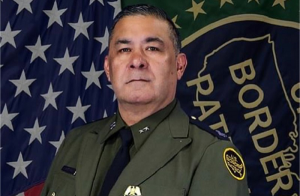“It’s them!” screamed a scuba diver as he scraped away algae from a submerged car’s registration plate. The finding of the apparent remains of two long-missing American teenagers was the latest devastating find for a community of YouTube sleuths.
Among the platform’s viral hits with billions of views is a subset of YouTubers who use sonar instruments to search waterways for automobiles associated with missing people cases in the United States – and the bones they may contain.
Also Read | Instagram head faces senators amid anger over possible harms
That approach was essential to this week’s discoveries in a 21-year-old mystery in the southern state of Tennessee, one of a succession of cold cases solved using revenue produced by the clicks created by these outfits’ clips.
The greater increase in online sleuthing has had a mixed influence, with high-profile misfires and the temptation for viral material, but in certain significant situations, the crowd’s input has been critical, according to experts.
Erin Foster and Jeremy Bechtel vanished from their small central Tennessee town of Sparta in April 2000, leaving family and friends to think they had just run away to start a new life.
However, Jeremy Sides, 42, a scuba diver whose YouTube channel “Exploring with Nug” concentrates on discovering missing property and persons, produced a video on December 4 that has already been viewed 1.4 million times and appears to have solved the issue.
“Once I confirmed it was the tag (license plate)…it was just a wave: This is going to be over, they get to go home, their families have answers,” he told AFP of his dive to find the car in Tennessee’s Calfkiller River.
Sides had been helpful in seemingly solving a case for the second time in roughly a month, the first being the discovery of a car linked to a lady missing since 2005 in the Tennessee hamlet of Oakridge.
Authorities in Sparta were still trying on Friday to authenticate the identity of the bones discovered by Sides, but local police said they thought they belonged to the missing youths.
“Nobody saw them crash”
Chaos Divers, another YouTube organisation, claimed to have found the remains of seven missing people in the last two months after travelling approximately 8,000 miles (nearly 12,900 kilometres) across the United States.
The task elicits strong emotions, particularly when it comes to informing families who have been left in the dark about what happened to their sons, spouses, or brothers.
“It’s a heartbreaking, gut-wrenching feeling that you never want to give up. Because you are telling them and you’re watching the tears roll down their face, but you’re watching this weight lift off their shoulders,” said 38-year-old Lindsay Bussick, who is Chaos Divers founder Jacob Grubbs’ partner in the operation.
Bussick and Grubbs, both from Illinois, stated that their work was more than just a quest for the clicks on YouTube that decide how much money a video may make.
“I’m sorry that I have to bring this content like this to be able to help defend the next family,” said Grubbs, a 38-year-old former coal miner.
“But this is a way that we have figured out to be able to fund the help for another family,” he added.
According to Adam Scott Wandt, an assistant professor of public policy at New York City’s John Jay College of Criminal Justice, unskilled “true-crime armchair sleuths” and their efforts have become a cultural phenomena in the last decade.
However, the outcomes have been wildly disparate. He mentioned that several individuals attributed to the social media frenzy surrounding dead US roadtripper Gabby Petito as aiding investigators in locating her body this year.
Simultaneously, internet sleuths smeared an innocent college student in their fear-fueled search for the assailants who detonated homemade bombs at the 2013 Boston Marathon, killing three people.
“The public is getting better at it, but it still can be very self-serving,” added Wandt, noting the temptation for seeking clicks. “But I’m definitely seeing more positive use over time.”
Working as a supplement to police, rather than throwing tips and theories at investigators, appears to be one method freelancers have found work.
In the Sparta case, police stated they had heard Sides was looking into something in their region, but after noticing he wasn’t looking in the appropriate place, they gave him some pointers on where to look.
Days later, the bittersweet finding was made.
“I ended my search in that river in town, and that’s where I found them. It looks like a simple car accident,” Sides told AFP.
“They just went off the road and nobody saw them crash. So sadly that’s where they sat for 20 years until I came along,” he added.






